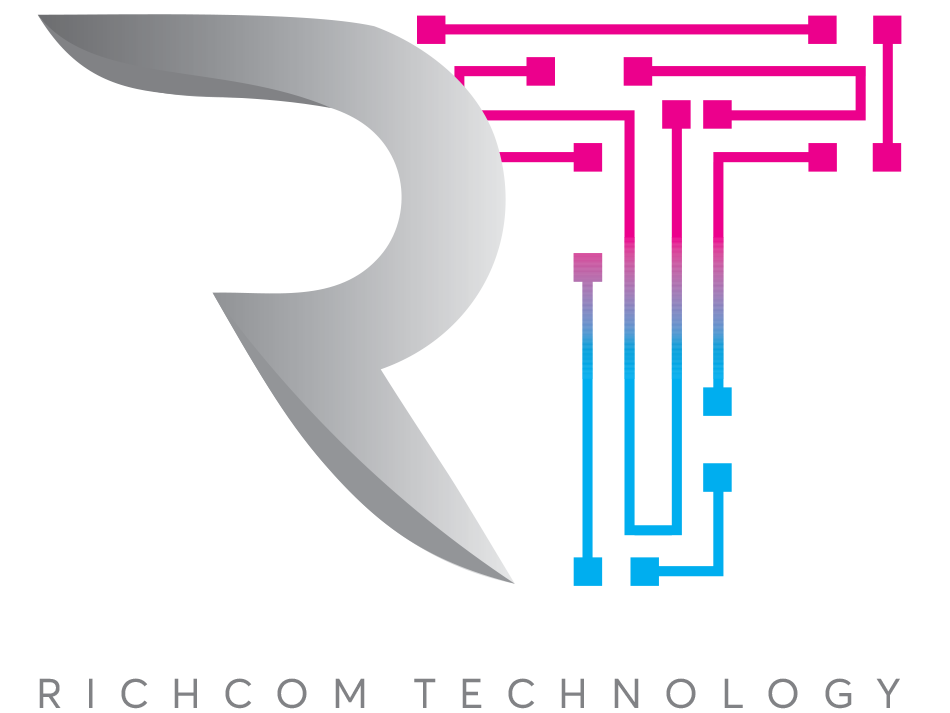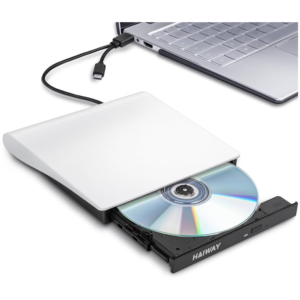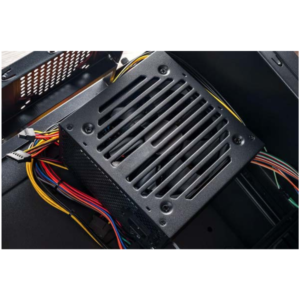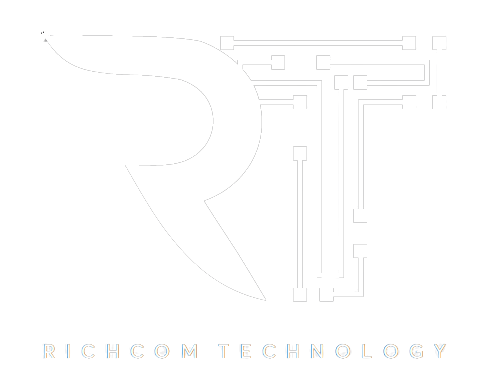Lenovo laptops are known for their superior design, functionality and features. The Lenovo laptop display is an important component of the overall laptop experience. This article will explore the various aspects of a Lenovo laptop display, including its resolution, brightness levels, color accuracy and viewing angles. It will also address how to adjust the display settings for optimal performance and user satisfaction. This article seeks to provide an overview of the different specifications and features of a Lenovo laptop display in order to assist potential customers in making an informed decision when selecting a laptop.
The first section of this article will discuss the different types of Lenovo laptop displays available on the market today and outline their technical specifications. Resolution is one key aspect that affects picture quality, with higher resolutions providing sharper images with greater detail. Brightness levels can also influence visibility in different lighting conditions while color accuracy ensures that colors are faithfully reproduced on the screen. Viewing angles are another important factor as they dictate how far away from the center point viewers can be while still getting an accurate image representation on the screen.
The second part of this article will focus on how to adjust the various settings on a Lenovo laptop display for optimal performance and user satisfaction. This includes adjusting brightness and contrast levels, choosing a suitable color profile or calibrating it manually, as well as configuring advanced color management options if available. Lastly, it will address common issues encountered with Lenovo laptop displays such as blurry text or poor picture quality due to incorrect settings or hardware malfunctions.
In conclusion, this article seeks to provide readers with an understanding of what makes up a high-quality Lenovo laptop display as well as how to configure it for optimal performance and user satisfaction. With this knowledge at hand, potential customers can make informed decisions when selecting a suitable model for their needs.
What Is the Resolution Of The Lenovo Laptop Display?
When selecting a laptop, the display resolution is an important factor to consider. This resolution provides clarity and detail within the image being presented on the display. Lenovo laptops offer various display resolutions that can be tailored to meet individual requirements based on a user’s needs.
Resolution is measured in pixels and is often denoted by numbers with an ‘x’ separating them such as 1920×1080 or 1366×768. The first number indicates the width of the image while the second number indicates the height. A higher resolution means more pixels and thus more clarity and detail within an image, where a lower resolution would have fewer pixels resulting in less detail, however this would also result in less strain on computer resources.
When it comes to Lenovo laptops, many models offer different resolutions ranging from 1366×768 to 3840×2160. Generally speaking, most laptop displays will have 1920×1080 as their native resolution which offers a good balance between clarity and performance. Ultimately, it is important for users to consider their individual requirements when choosing a laptop display resolution ensuring that they are getting the best performance for their money.
Lenovo G50-80 15’6 Laptop Display
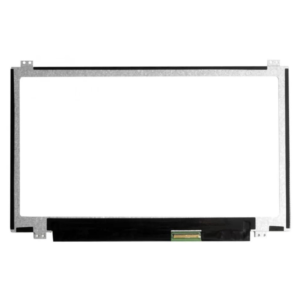
The Lenovo G50-80 is a 15.6-inch laptop display designed and manufactured by Lenovo. This display offers an HD LED backlit panel with resolutions up to 1366×768 pixels, giving it a 16:9 aspect ratio. The G50-80 also has anti-glare technology for improved visibility in brightly lit environments and a digital HDMI port for connecting external displays.
In addition to the resolution and anti-glare features, the G50-80 also offers a number of other features such as built-in stereo speakers, dual microphone array, integrated webcam and microphone, 3D support, and optional Bluetooth connectivity. The viewing angles of this display are 178 degrees horizontally and vertically, providing an optimal viewing experience from almost any angle. Furthermore, this laptop display is Energy Star certified meaning it is energy efficient.
The Lenovo G50-80 15.6 laptop display provides users with high resolution visuals along with numerous additional features making it an ideal choice for any user looking for a quality laptop display. With its range of features combined with its energy efficiency certification, this display can provide users with reliable performance for years to come.
What Kinds of Technology Are Used In The Lenovo Laptop Display?
The Lenovo laptop display is a key component of the laptop that requires careful thought and consideration when purchasing. As such, understanding the technology used in these displays is important to ensure that users can make an informed decision on their purchase. This article will discuss the kinds of technology used in Lenovo laptop displays and how they contribute to the overall viewing experience.
The main technology used in Lenovo laptop displays is LCD or liquid crystal display. This type of display utilizes two sheets of polarizing material with a liquid crystal solution between them. When an electric current is applied, the crystals align so that light can pass through them, creating images on the screen. In addition, this type of display offers improved brightness and color accuracy compared to other types of displays. For example, Lenovo’s ThinkPad T480s has a 14-inch FHD LCD multi-touch display with up to 300 nits brightness for better visibility outdoors or in direct sunlight.
Finally, LED, or light-emitting diode displays are also found on some Lenovo laptops such as the Yoga 920. These displays use an array of LEDs to create an image by illuminating each pixel at different levels of intensity. LED screens have higher resolutions than LCD screens because they require fewer backlighting components which allow for more pixels per inch (PPI) resolution than traditional LCD screens. This results in sharper images and better color accuracy; however, this type of display also consumes more power than LCD displays do due to their backlighting process.
In summary, Lenovo laptop displays utilize several technologies including LCD and LED screens that provide different levels of brightness and color accuracy depending on their level of complexity and number of pixels per inch resolution. Both technologies offer improved image quality when compared with traditional CRT monitors; however, LED screens tend to consume more power due to their backlighting process while offering better resolution than standard LCDs.
Are There Different Types of Screens Available for The Lenovo Laptop?
The modern laptop display technology has evolved significantly over the years. Current laptop displays are equipped with a variety of technologies including LCD, LED, or OLED screens. Lenovo laptop displays are also subject to this technology, but do they offer different types of screens?
To answer this question, one must first consider the various types of screens available on the market. LCD (Liquid Crystal Display) is the most common type of display found in laptops. These displays are known for their excellent color reproduction and viewing angles. LEDs (Light Emitting Diode) are a more recent innovation in laptop display technology and offer brighter colors and better power efficiency than LCDs. OLED (Organic Light-Emitting Diode) is a newer type of screen which offers increased brightness levels and improved image quality compared to LCDs and LEDs.
Please check out our Lenovo Laptop Display Prices in Sri Lanka.
Lenovo laptop displays are equipped with either an LCD or an LED screen depending on the make and model of the device. However, some models may feature higher-end OLED screens which offer more vivid colors and deeper blacks than traditional LCDs or LEDs. Ultimately, whether to choose an LCD, LED or OLED panel for a Lenovo laptop depends on what one values most when it comes to picture quality and power efficiency.
It can be concluded that Lenovo laptops come with various types of displays depending on the specific model chosen. It is important to consider each type’s features before making a decision as each display offers different benefits when it comes to image quality and power efficiency.
Lenovo IdeaPad 330s-14ikb 14″ Laptop Display
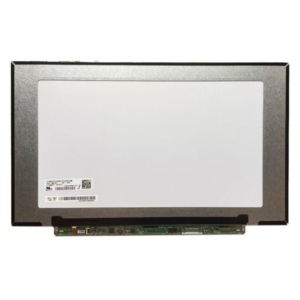
Firstly, the Lenovo IdeaPad 330s-14IKB 14” laptop display has a resolution of 1366 x 768 pixels. It also has an anti-glare finish that reduces eye strain from prolonged usage. Some of the other features include:
* An LED backlight for improved brightness and contrast levels
* Screen ratio of 16:9 for optimal viewing angles
* Brightness level of 220 nits for improved visibility
* Response time of 5ms to reduce ghosting effects when gaming or watching videos
In addition to these features, the Lenovo IdeaPad 330s-14IKB 14” laptop display offers excellent color accuracy with a color gamut of 45% NTSC. This allows users to enjoy their favorite movies and games in vivid colors. Additionally, it has a viewing angle of 80/80 degrees, which ensures that content remains visible even when viewed from different angles.
Overall, the Lenovo IdeaPad 330s-14IKB 14” laptop display is an excellent choice for users who are looking for a quality display with good picture quality and performance. It offers a wide range of features such as an anti-glare finish, an LED backlight, and excellent color accuracy that make it ideal for both casual use and multimedia tasks. With its bright screen and quick response time, users can enjoy their favorite content without any hassle.
What Are the Benefits of a High-Resolution Lenovo Laptop Display?
A high-resolution display is a major factor in how comfortable and enjoyable the user experience of a laptop can be. The Lenovo range of laptops offers models with displays that offer a variety of resolution levels, each with their own benefits.
To begin with, higher resolution displays offer an increased level of detail, making images and videos much sharper as well as providing more on-screen space for multitasking. This makes them ideal for using multiple programs at once, such as having a word processor open while playing music or streaming a video in the background. Moreover, they are also able to render text more clearly and provide better color accuracy when viewing photos and videos. Some of the features that come with higher resolution displays include:
1. Increased sharpness and clarity – Higher resolutions allow for sharper images and improved readability when zooming in on text or graphics.
2. Enhanced multitasking capabilities – Having more on-screen space allows for multiple programs to be used at once, making it easier to work on multiple tasks efficiently.
3. Improved color accuracy – Colors are rendered more accurately, resulting in a better viewing experience when watching movies or editing photos/videos.
4. Reduced eye strain – With clearer text, less scrolling is required which reduces eye strain over long periods of use.
In addition to these advantages, many Lenovo laptops feature anti-glare panels which reduce the amount of light reflecting off the screen and make it easier to view content in brightly lit environments such as outside or near windows during daylight hours. This helps users stay productive even in difficult lighting conditions without having to worry about straining their eyes too much.
All these factors taken together make higher resolution displays from Lenovo laptops an attractive proposition for those who require a comfortable and immersive user experience regardless of their environment or task at hand.
How Can I Maximize the Quality of My Lenovo Laptop Display?
Maximizing the quality of a Lenovo laptop display is essential for a number of reasons. Primarily, it enables users to take advantage of all the features their device has to offer. With a high-resolution display, users can enjoy clearer images, sharper text and better contrast. Additionally, they will be able to work more efficiently by reducing eye strain during extended viewing periods. To achieve peak performance out of one’s Lenovo laptop display there are several steps that can be taken:
Firstly, adjusting the brightness settings on the device is an effective way to improve visuals. Increasing or decreasing the brightness level to suit individual preferences helps create optimal viewing conditions while helping conserve battery life. Secondly, calibrating the color settings is also important in order to get the best image quality possible. By adjusting these settings accordingly, users can ensure their Lenovo laptop displays accurately represent their intended colors and hues. Finally, regularly cleaning off dust and debris from the device’s vent openings will help ensure proper airflow which keeps components cool and running at optimal levels even during intensive use sessions.
These simple steps allow users to take full advantage of their Lenovo laptop displays and have them performing at their peak potential with minimal effort involved. By getting familiar with each step and following them regularly, one can not only enhance their viewing experience but also extend the lifespan of their device as well as its various components.
What Are the Potential Drawbacks of a Low-Resolution Lenovo Laptop Display?
The resolution of a laptop display is an important factor in its overall image quality. A low-resolution display can lead to noticeable issues such as blurriness, fuzzy text and images, and washed-out colors. It is therefore essential to consider the resolution of a laptop display when making a purchase decision.
When it comes to Lenovo laptops, many models offer a range of resolutions, ranging from HD (1366×768) to 4K (3840×2160). Lower resolutions are often associated with lower prices, but this can come at the cost of image quality. Low-resolution displays are more prone to issues such as blurriness and fuzzy text due to their limited ability to render fine details. Additionally, color reproduction may be less accurate than with higher resolution displays.
Choosing the right resolution for a laptop display is an important choice that should be made based on individual needs. While low-resolution displays may offer cost savings, they are not suitable for all users and their potential drawbacks should be kept in mind when making a purchase decision.
What Are the Different Color Profiles Available On a Lenovo Laptop Display?
A laptop display’s color profile is the way that it displays colors and the range of those colors. A common color profile used in many laptops is sRGB, which stands for Standard Red Green Blue. This color profile is typically seen as being a more accurate representation of colors when compared to other profiles.
Lenovo laptops offer several different color profiles that users can choose from depending on their needs. These profiles include sRGB, Adobe RGB, and DCI-P3, among others. Each of these profiles has its own advantages and disadvantages, such as accuracy in displaying certain colors or wider dynamic range for viewing multimedia content.
When selecting a color profile for a Lenovo laptop display, there are several factors to consider such as the type of content being viewed or edited on the screen and the user’s preferences regarding how they want their content to appear. Ultimately, each user should experiment with different profiles to find one that works best for them given their particular needs and preferences.
Is An Anti-Glare Screen Available For The Lenovo Laptop?
When choosing a laptop, an important factor to consider is the display. Lenovo laptops come with various display features, including anti-glare screens. An anti-glare screen is a device that uses a matte surface to reduce the amount of light reflecting off the screen, allowing for better visibility and contrast in bright lighting conditions.
The presence of an anti-glare screen on a Lenovo laptop can help protect eyes from eye strain due to long hours spent in front of the computer, especially when working outdoors or in bright environments. Furthermore, an anti-glare screen can also improve image clarity, making it easier to view content on the laptop’s display without any distractions from background light.
Lenovo offers several different models that include an anti-glare display option for customers who need this feature in their laptop. While there are some models with built-in anti-glare screens, other models may require additional hardware for optimal performance. It is important for users to research the specific model they are interested in and determine if it includes an anti-glare screen or if extra components need to be purchased separately.
Lenovo IdeaPad G460 14″ Laptop Display
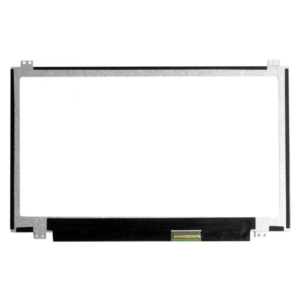
The Lenovo IdeaPad G460 14′ laptop display is a mid-range LCD display featuring LED backlight technology. The display has a resolution of 1366 x 768 pixels and features a 16:9 aspect ratio. Its anti-glare screen is designed to reduce the amount of light reflection off the screen, minimizing eye fatigue. This display also offers a contrast ratio of 600:1 as well as a viewing angle of 175 degrees, allowing users to view images clearly and comfortably from any angle.
In terms of connectivity, this laptop display has one HDMI port and one VGA port for connecting external displays or TVs. It also has an audio jack for connecting headphones or speakers. Furthermore, the device supports both DC power and AC power input, which allows users to charge their laptops with either type of power source.
Overall, the Lenovo IdeaPad G460 14′ laptop display provides excellent image clarity with its LED backlight technology, anti-glare screen, 600:1 contrast ratio, and wide viewing angle. It is also equipped with several ports for connecting external displays and audio devices as well as support for both DC and AC power input sources. This makes it an ideal choice for those looking for an affordable yet reliable laptop display solution.
How Does the Refresh Rate of the Lenovo Laptop Display Affect Performance?
The refresh rate of a laptop display is an important factor to consider when evaluating performance. It refers to the number of times per second the image on the screen is updated, and is usually measured in Hertz (Hz). Higher refresh rates provide smoother and more detailed images, while lower ones can create blurring or ghosting effects.
Refresh rate affects gaming performance most notably. A higher frequency will reduce lag or screen tearing during fast-paced action sequences. It also becomes more noticeable as resolution increases; a high-resolution display with a low refresh rate may cause stuttering or other issues as the GPU struggles to keep up with the demands of updating high resolution images quickly.
For general use such as web browsing or watching videos, a higher refresh rate may not be necessary. However, users who require more precise visuals for tasks like photo editing or graphic design should look for displays with higher frequencies for better performance and precision. Ultimately, selecting the right refresh rate depends on the user’s needs and preferences.
How Does the Viewing Angle of the Lenovo Laptop Display Affect Usability?
The viewing angle of a laptop display is an important factor in determining its usability. It is the measure of how far a user can move around a laptop before the image on the screen begins to look distorted. A wide viewing angle ensures that users can view content from different positions and angles without having to adjust their position frequently. This makes it easier to use the laptop for extended periods of time, as well as making it more suitable for group work or presentations.
An important aspect of assessing the usability of a laptop’s viewing angle is its resolution, which is determined by the number of pixels per inch (PPI) displayed on the screen. Higher PPI results in higher clarity and sharper images, but also reduces the size of visible objects on the screen. Additionally, screens with high PPI require more power from the laptop’s battery, resulting in decreased battery life.
Overall, improving the viewing angle of a laptop display is essential for increasing its usability, but this needs to be balanced against other factors such as power consumption and resolution quality. Understanding how these factors interact will help ensure that users get maximum benefit from their laptops when using them for extended periods or when presenting them to groups.
What Are the Best Practices for Cleaning and Maintaining the Lenovo Laptop Display?
The maintenance of a laptop’s display is an important factor in its usability. In order to ensure that the display of a Lenovo laptop is kept in optimum condition, there are certain practices that should be observed. It is important to understand how to clean and maintain the display correctly, as improper methods can lead to damage or decreased performance.
Firstly, it is important to use the correct materials when cleaning the display of a Lenovo laptop. A soft cloth should be used for wiping away dust and smudges, whilst a damp cloth can be used for more intensive cleaning. However, caution should be taken when using liquid cleaners on the display as they can damage the internal components of the laptop.
Additionally, regular preventative care must be taken in order to avoid any potential issues with the display of a Lenovo laptop. Care should be taken when transporting and storing the device, particularly if it will be exposed to sunlight or moisture. Furthermore, adjusting settings such as brightness and contrast regularly can help extend the life span of the display significantly.
In conclusion, proper maintenance of a Lenovo laptop’s display can greatly improve its usability and prolong its lifespan. Taking steps such as using appropriate cleaning materials and engaging in regular preventative care is essential for ensuring optimal performance from this type of device.
Conclusion
The Lenovo laptop display offers a number of options for users to choose from when selecting the right laptop. With a variety of resolutions, technology, types of screens, and specifications available, users can find the perfect model to suit their needs. The refresh rate and viewing angle of the Lenovo laptop display also play an important role in its overall performance and usability. To ensure that the display remains in top condition, it is important to follow best practices for cleaning and maintaining it. In conclusion, with all these factors in mind, users can make informed decisions about which type of Lenovo laptop display is best suited for them. By understanding the features available and taking proper care of the device, users can maximize their experience with this versatile piece of technology.
